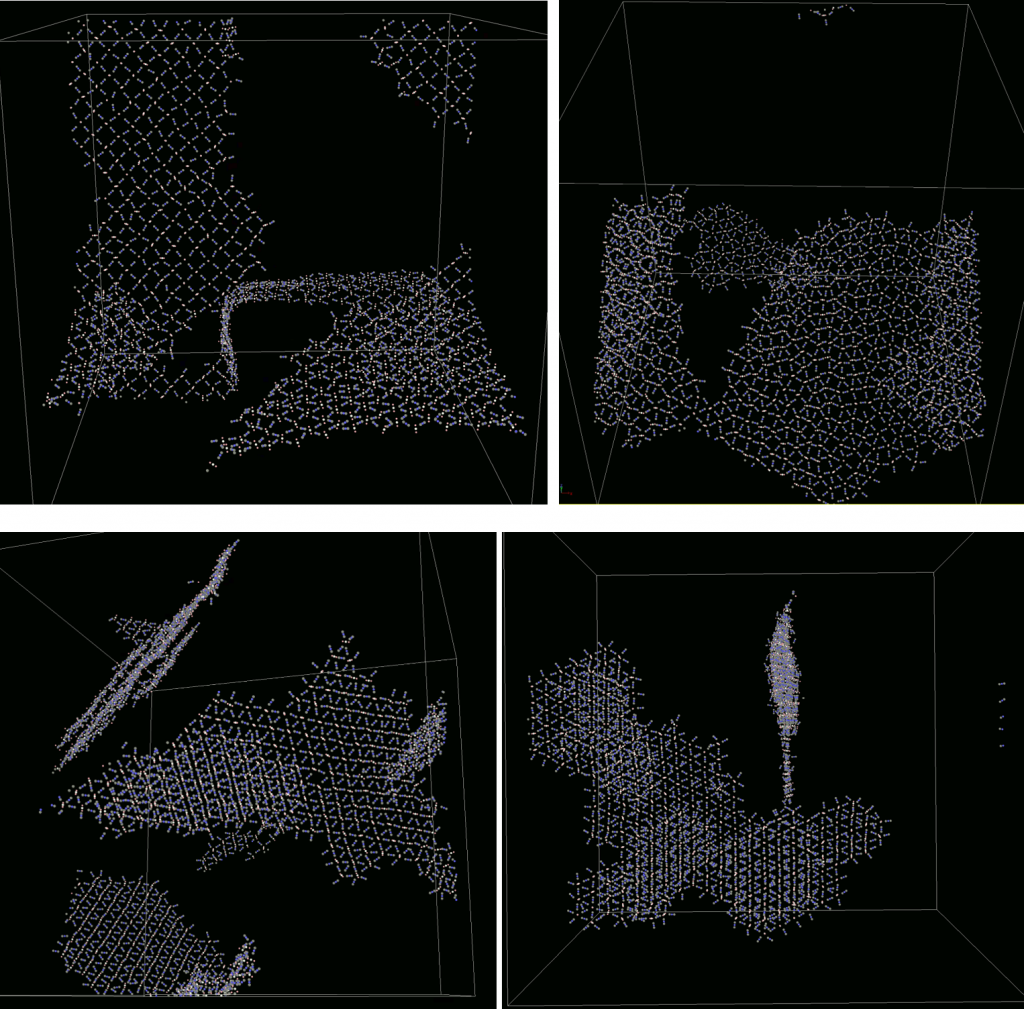Computational design of self-assembling supramolecular motors and quasicrystals (MOTOQUASI)
The project was financed by CNCS-UEFISCDI (project number PN-III-P1-1.1-TE-2019-1018), and ran from September 2020 to September 2022. This was my third (and last) “Young Research Teams” project.
The field of nanotechnology transformed virtually every aspect of our lives during the last few decades. As researchers gradually understood the structural basis of complex biological processes, the need arose to rationally design artificial structures on the nanoscale that can mimic some of such processes, or interfere with them at the molecular/supramolecular level.
During the project we have created new models of colloidal building blocks that can self-assemble into functional structures at this length scale. We modified a coarse-grained model of charged rigid particles, having only ionic and excluded volume repulsive interactions, originally developed in my group for self-assembling tetravalent Goldberg hollow shells. By exploiting the observation that large-scale cooperative rearrangements between competing structures in model hollow shells have in fact very simple energetic profiles, we applied this knowledge to design novel colloidal motors, which were able to transform external energy input into directional rotational motion. The second model created is a minimal model for colloidal building blocks capable of self-assembly into two-dimensional quasicrystals. Such structures are predicted to have very interesting optical properties, and can be exploited for many photonic applications. The computational models developed in this project can guide experiments by specifying the minimal conditions for building blocks in order to be able to spontaneously form functional structures on the colloidal length scale.
Team members:
- Istvan HORVATH, PhD student
- Menyhart-Botond SAROSI, postdoctoral researcher
- Szilard FEJER, principal investigator
Summary of research activities
- setting up the simulation framework with HOOMD-Blue and Docker containers
- exploration of parameter space for selected toy models in order to better understand their behaviour
- exploring single transition state rearrangements corresponding to cooperative rotatory motion
- finding the basic design of a self-assembling colloidal motor
- adapting the model for explicit solvent
- exploring different energy transfer methods to colloidal motors
- creating a minimal model facilitating assembly of two-dimensional quasicrystals
- elucidating the factors which drive assembly into two-dimensional crystalline or quasicrystalline phases
- studying the dynamics of quasicrystal formation under different circumstances
The final project report can be downloaded from here.

Multimedia
The following video shows a long single transition state rearrangement between two lowest-energy structures of a closed shell:
The following animation shows sustained rotational motion for the rotor blade (a minimal model for a colloidal motor:
The following animation shows assembly of a sheet with local quasicrystalline order:
